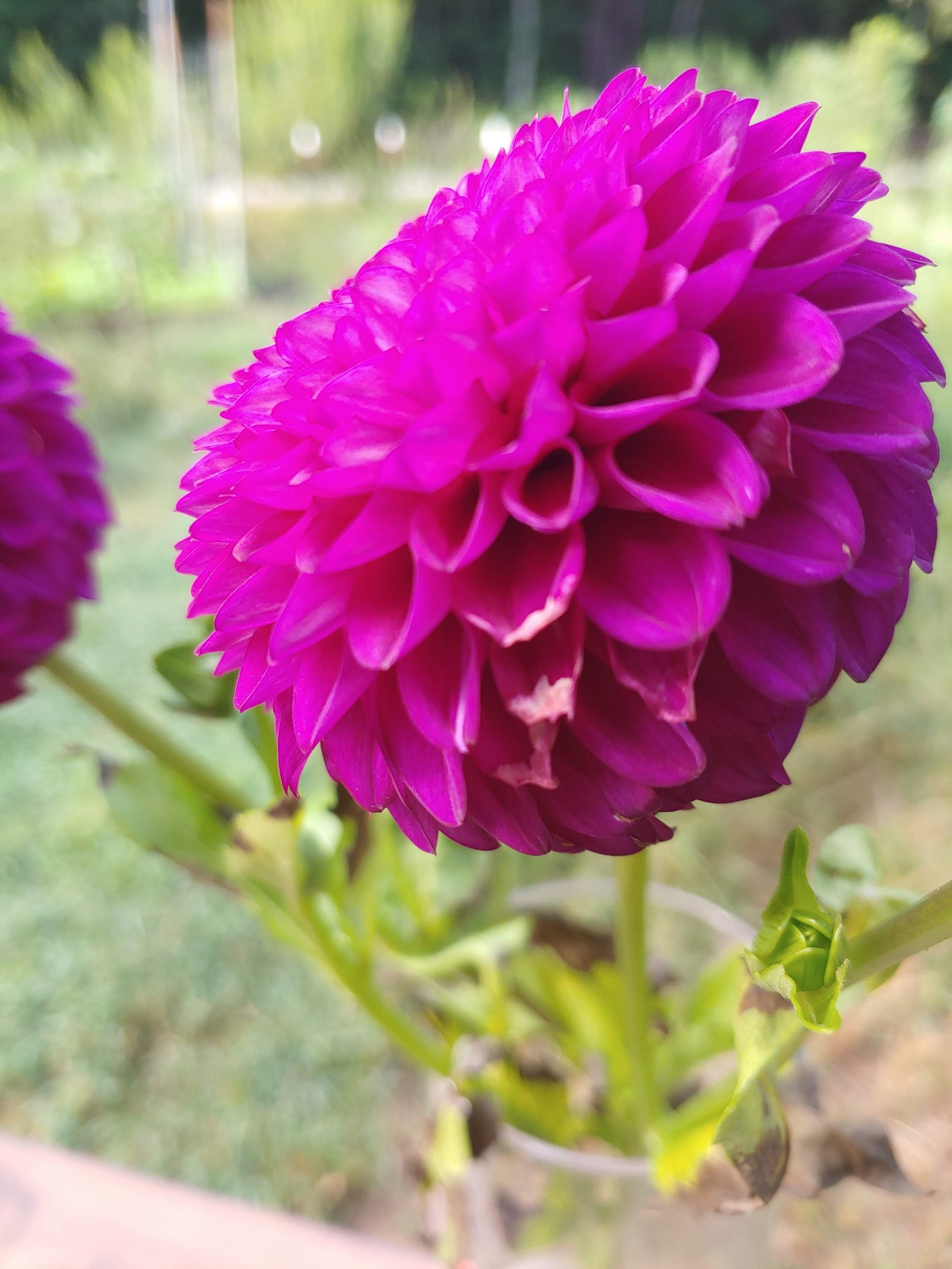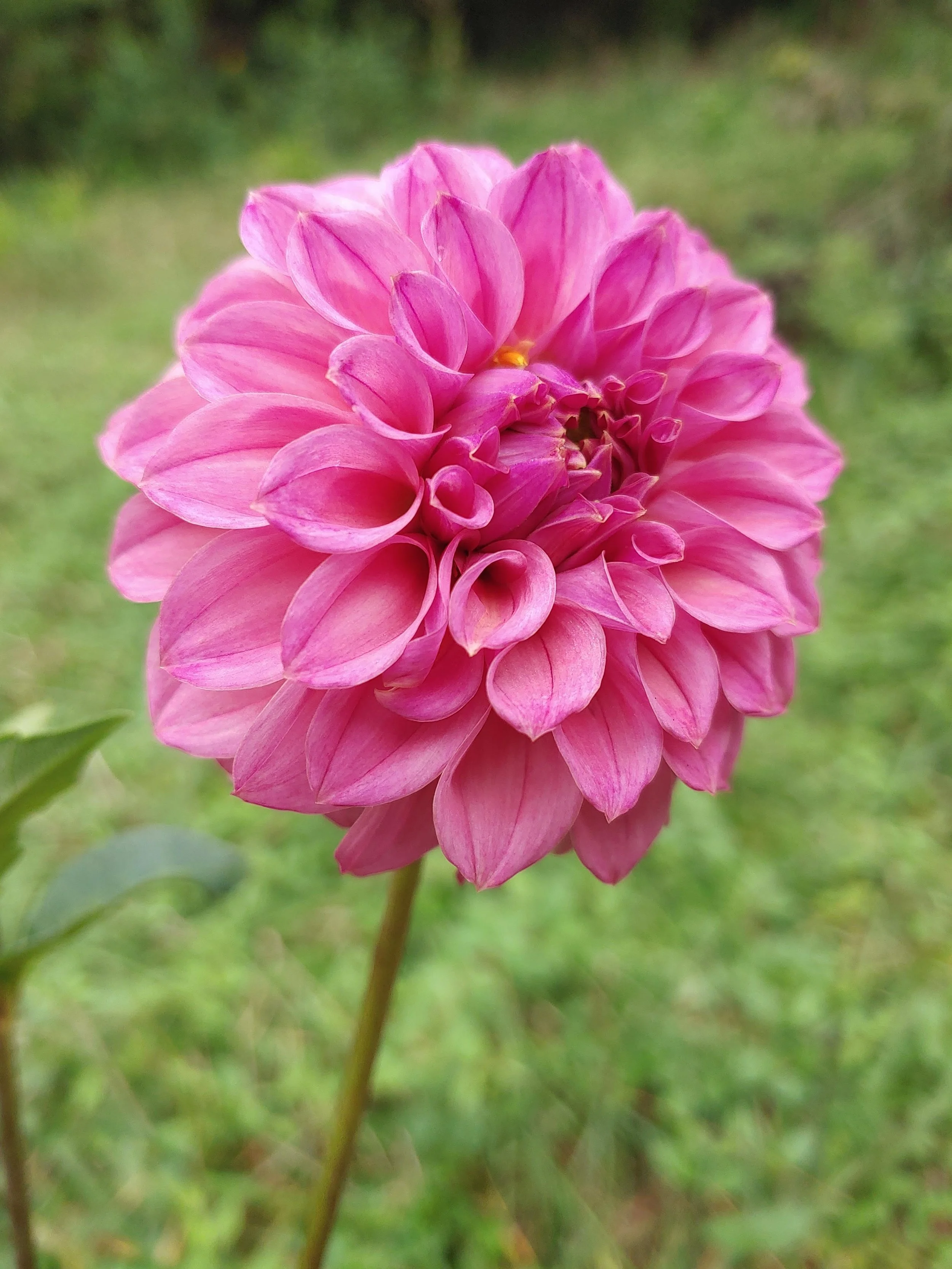
Dahlia Vase Life Trials: The Boiling Water Method
I’ve written a lot on getting the best vase life for your dahlias— But my best recommendation is always to use a flower cooler. However, the backyard dahlia grower doesn’t often have access to a professional flower cooler. So today I’d like to share results of another method of getting great vase life from your dahlias.
The Boiling Water Method is often mentioned as being a way to extend the vase life of your dahlias. But what does that mean exactly?
To use this method: You boil water (an electric kettle works great!), give your dahlia a fresh snip at the bottom of the stem (about 1/4”), then dip and hold it in the boiling water for about 30 seconds. Then place it immediately in your vase for display.
I remember using this method the first year I grew dahlias. I didn’t have access to any professional methods of cooling my flowers. But I couldn’t really remember if it worked or not. So I decided to run my own trial.
I chose 6 stems of the same dahlia harvested at the same time/day. This is Cryfield Harmony. (Note: the yellow center is not a result of cutting too late, just a heat response, this trial was conducted in August in the South)
Here’s how I conducted the trial: Stems were harvested early in the morning into a bucket with just water. Then they were allowed to rest in a 65-70 degree room for a few hours. After a few hours, I divided them up. Jar #1- I recut the stems and placed them in a vase with just water. Jar #2- I recut the stems and placed them in a jar with water and the appropriate amount of flower food. Jar #3- I recut the stems, dipped into boiling water for 30 seconds and then placed them into a jar with water and flower food.
**I always use flower food in my vase water with dahlias because I know for a fact that it increases vase life. My goal here was to see if the boiling water actually gave any boost to the vase life in addition to the flower food. **
The blooms looked great for several days with no sign of decay. Stems were held in my living room which stays around 70 degrees. I did not change the water or recut the stems from day one to the end of the trial.
On day 6, I began to see signs of browning and fading on the dahlia in Jar 1 (just water).
Jar 1, Day 6
On Day 7, I saw signs of fading/browning on the dahlias in Jar 2 and 3.
Jar 2, Day 7
Jars 2 and 3 began to fade at the same time but I noticed that Jar 2 definitely faded faster whereas Jar 3 was only beginning to turn brown on some petals.
Jar 3, Day 7
So what does all this tell me: Well obviously to get really accurate results, you’d need to repeat the experiment and also try it out with multiple varieties of dahlias. But generally speaking, boiling water doesn’t add any vase life over water with flower food.
My suggestion for increasing your vase life (for a backyard dahlia grower) remains to use flower food in your water. It’s just much easier and faster. If you don’t have flower food or don’t want to use it, then give the boiling water method a try- I think it would increase your vase life over straight water with no prior processing of the stem.
Notes:
What kind of flower food am I referring to: I use either Chrysal Professional #3 Vase Solution or Floralife Flower Food 300 - either works, whatever you can find. This is the white powdery stuff in the packets you get when you buy a bouquet. You can buy small pails of it on Amazon and other online market places.
Previous blog on increasing vase life in your dahlias- Click here.
Disclaimer: I know some people who swear by the boiling water method and if it’s working for you- then continue it! Keep in mind that health of plant, hydration and growing climate play a big role in the vase life of your dahlia. Most importantly— make sure you are enjoying them!!
New (To Me) Dahlia Varieties - August 2023
Dahlias have been in bloom for a full month here on our farm in Travelers Rest. I’m already seeing some new varieties that have potential as keepers.
I love dahlias that bloom in August! Why? Because early bloomers have so much potential- you can usually get two flushes off early varieties in our long growing season. So much more beauty potential!
I want to share some of them with you today. Caveat— These are my first impressions. I grow a dahlia for at least 2 years, usually 3 before I choose to add it to my collection.
Lark’s Ebbe
Lark’s Ebbe: I don’t think I really have to say much about this one- What a gorgeous color! Perfect size, I mean what’s not to like. Early bloomer, not too tall. So far it’s got a lot going for it.
Yvonne
Yvonne: I grew this one a few years ago but ended up getting rid of it. But from time to time I would think about this dahlia so I decided to bring it back. It’s a great combination dahlia— by that I mean that it’s good for a cut flower but also as a garden dahlia. It’s not super tall so will stand on it’s own with minimal support (or you could plant it admist other things to support it some). Early bloomer and gives lots of blooms. The petals are a bit susceptible to bruising (which was the original reason I cut it) but if you can handle it well— It’s really gorgeous!
KA’s Keltie Rose
KA’s Keltie Rose: 2nd year growing but in the crapshoot that was the 2022 season, I only got one bloom. This was grown from a cutting so it could be a bit later from a tuber. But the color on this— the photo doesn’t do it justice. It’s a dusty smoky rose color! I’m hoping it will pump out some blooms because I see a lot of potential for this color- I need a prolific bloomer in this tone. It’s a pretty plant too— slightly darker green foliage and the plant blooms above the leaf canopy.
Robinhood
Robinhood: This is another one that I used to grow but lost the tubers back in the days when I didn’t know how to store properly (takes a few years to learn). I love it’s coloring- kinda raspberry with peachy undertones. Early bloomer and threw a flush of several stems at once.
Gerrie Hoek
Gerrie Hoek: I’m loving the color and form of this one. It changes color with temperature too— blushier in heat and pinker in cool. It does have some growth habit issues— does a bit better with some disbudding so we’ll see if I feel like keeping up with that. But the main thing I love about this dahlia is that it makes me smile every time I walk past it. It’s the happiest flower!
All That Jazz
All That Jazz: This one was offered to me as a trade from another grower. I loved it’s coloring in photos I saw. I’ve been eagerly awaiting it to bloom and it finally did this week. The photo doesn’t do it justice - it has a tan/peach reverse with some purple tips and almost a light sangria color to the front. I’m going to have to pull out my nice camera because the phone camera isn’t cutting it!
So just a few I’m excited about. Still need to see if they are good tuber producers, resistant to powdery mildew, prolific and then to see how they do through different growing conditions - which takes a few years!
Guatemalan Flora
A few weeks back, I returned from 2 weeks spent in the amazing city of Antigua, Guatemala. My husband and I had a wonderful time resting and relaxing there. We had the added bonus of visiting some family living there too. I’d highly recommend it as a vacation destination.
When I’m on vacation, I love to take pictures of all the local flora. It’s one of my favorite things about visiting a new place— I want to know what grows there!
Guatemala is called the “Land of the Eternal Spring” and for good reason. The climate is mild all year round and produce and flowers abound! I’ve put together a selection of photos from our trip of the local flora. Most of these I don’t know the names of but tried to identify where I could.
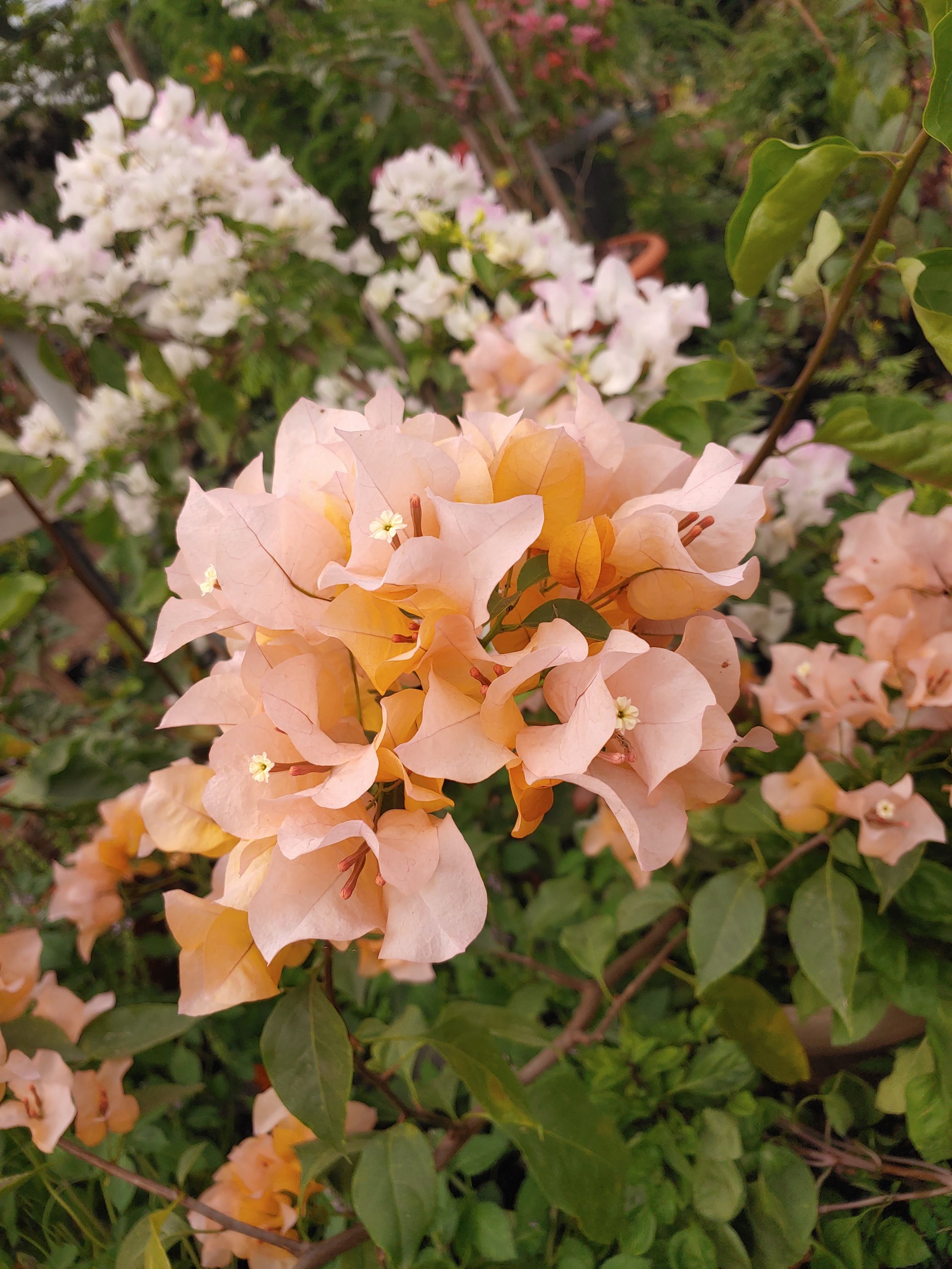
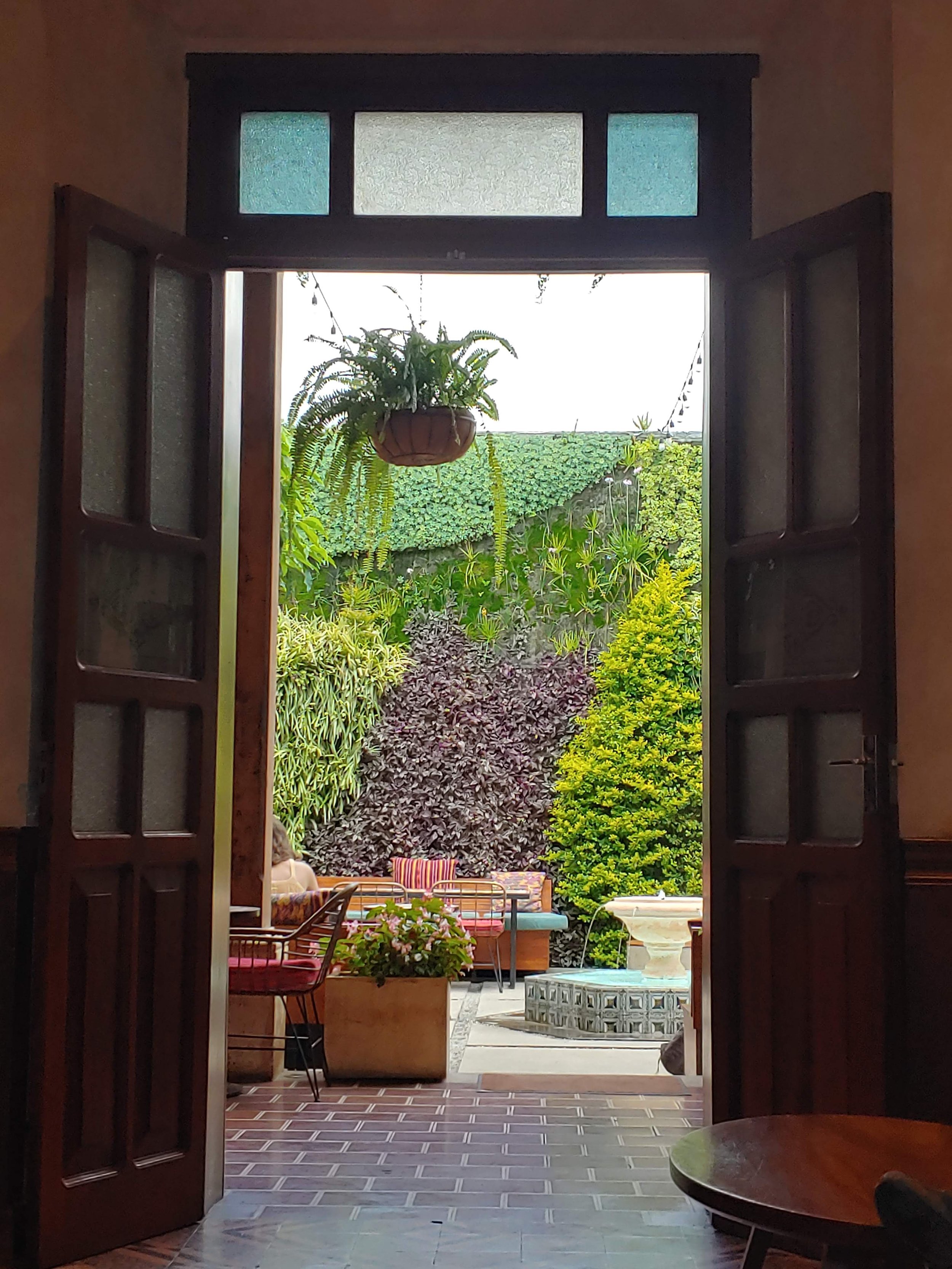
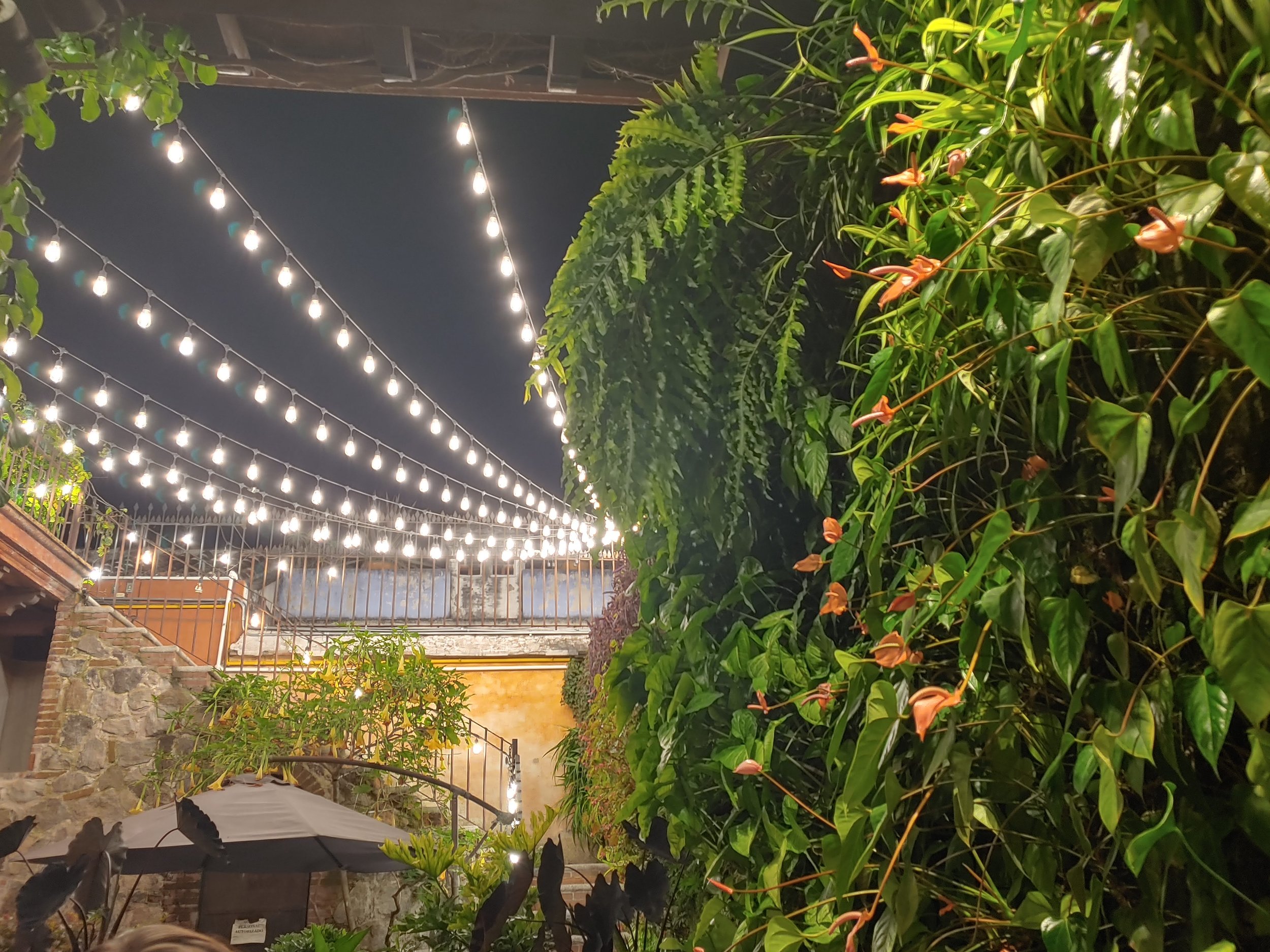
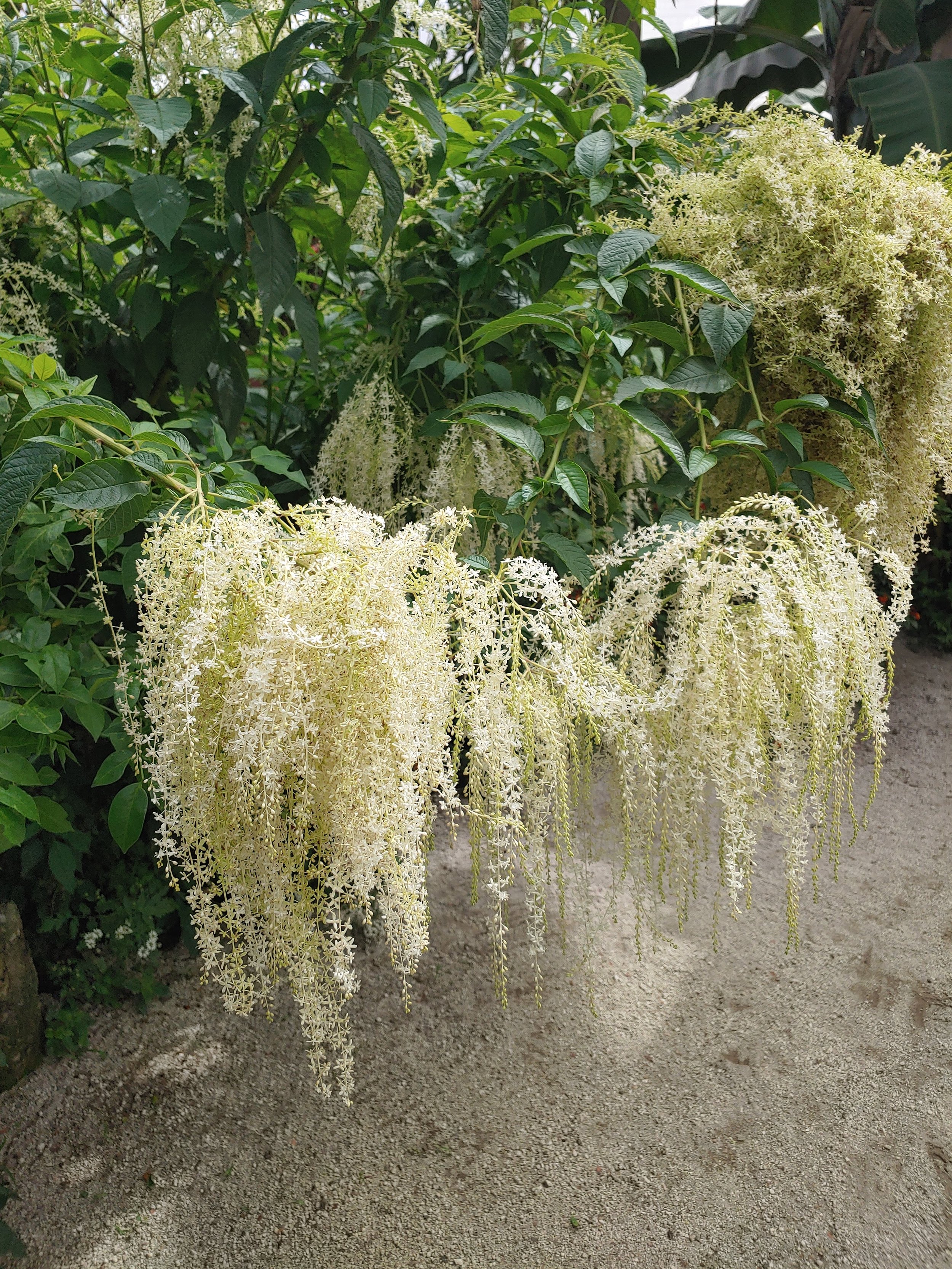

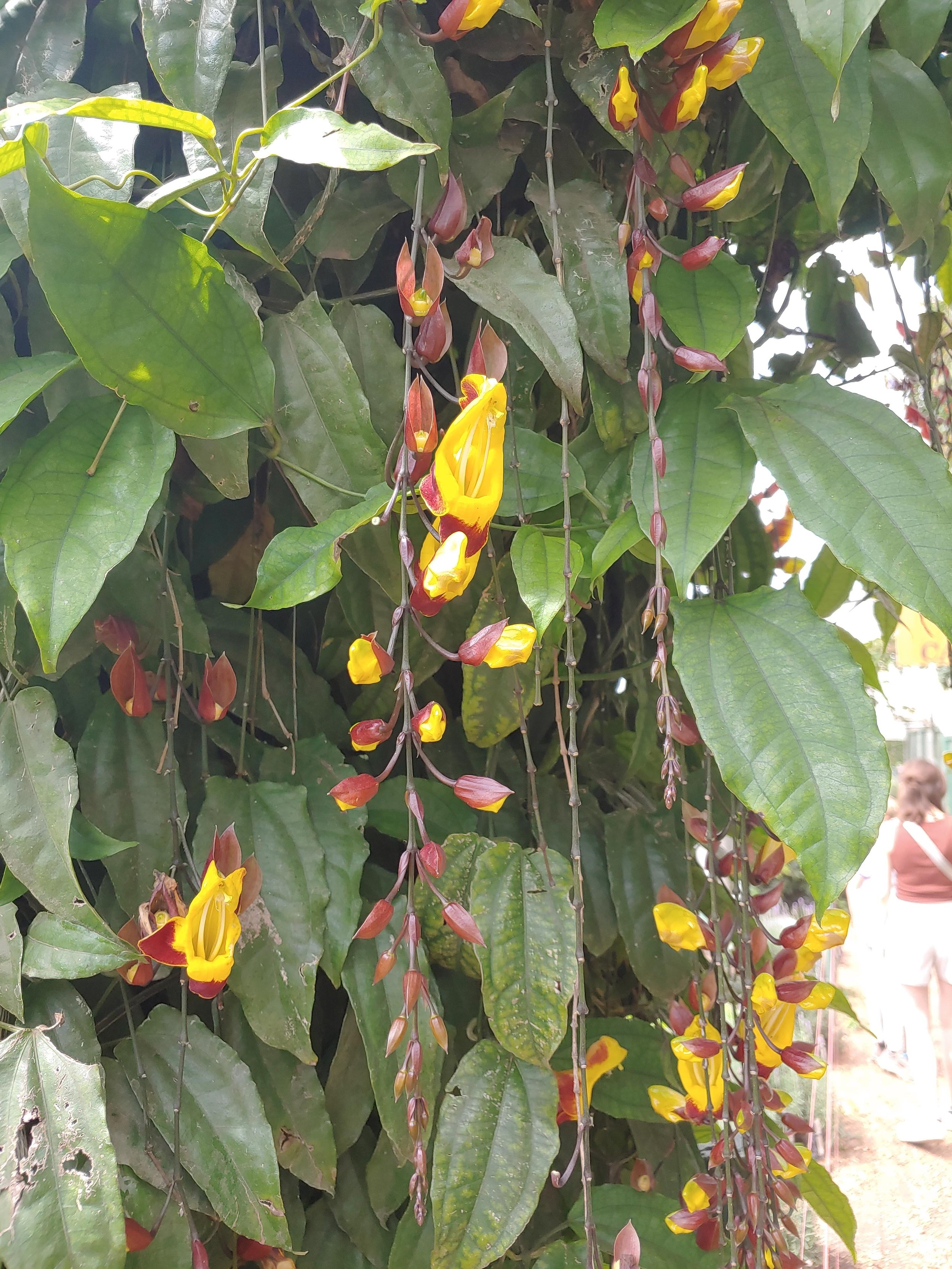
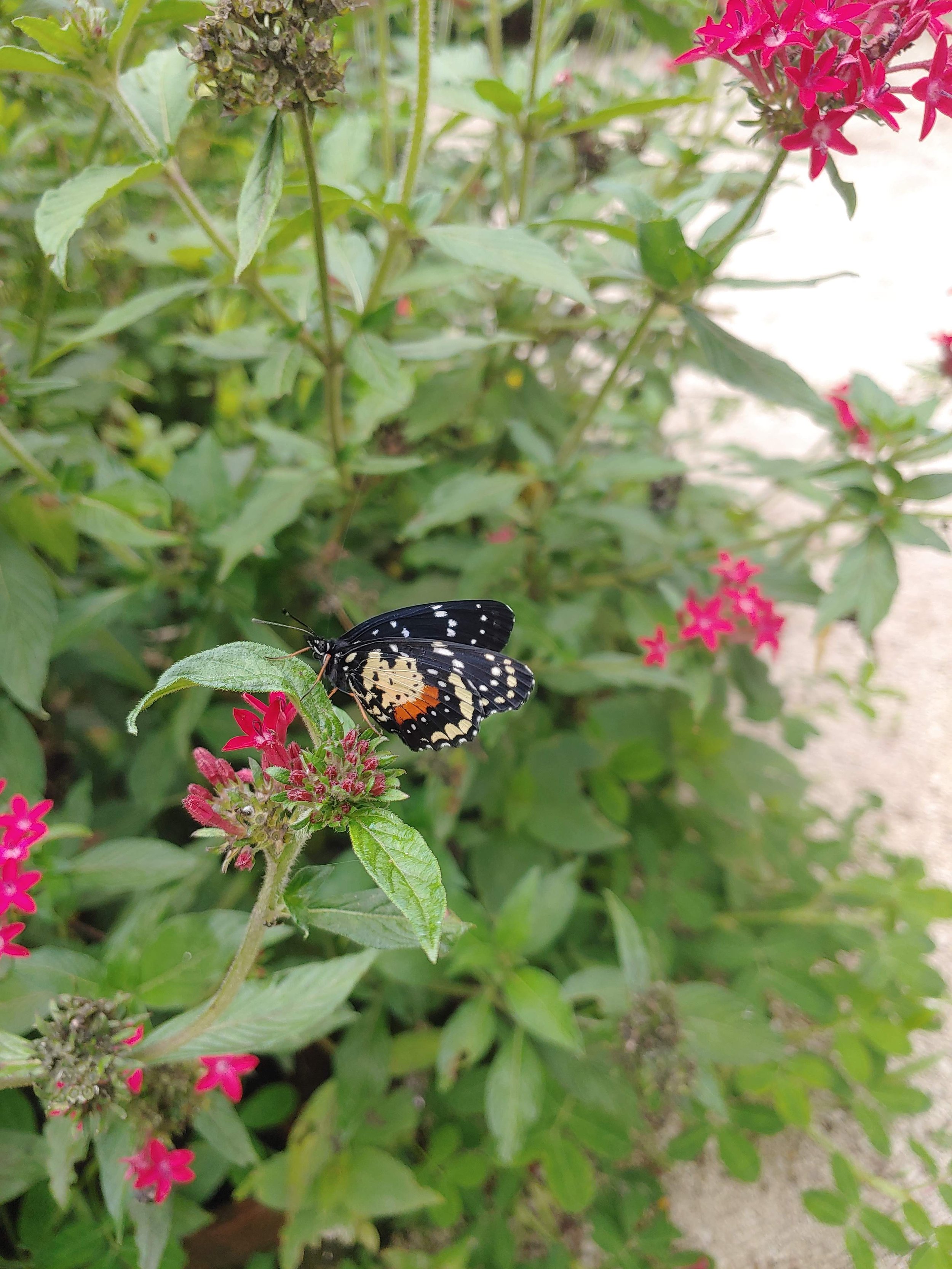
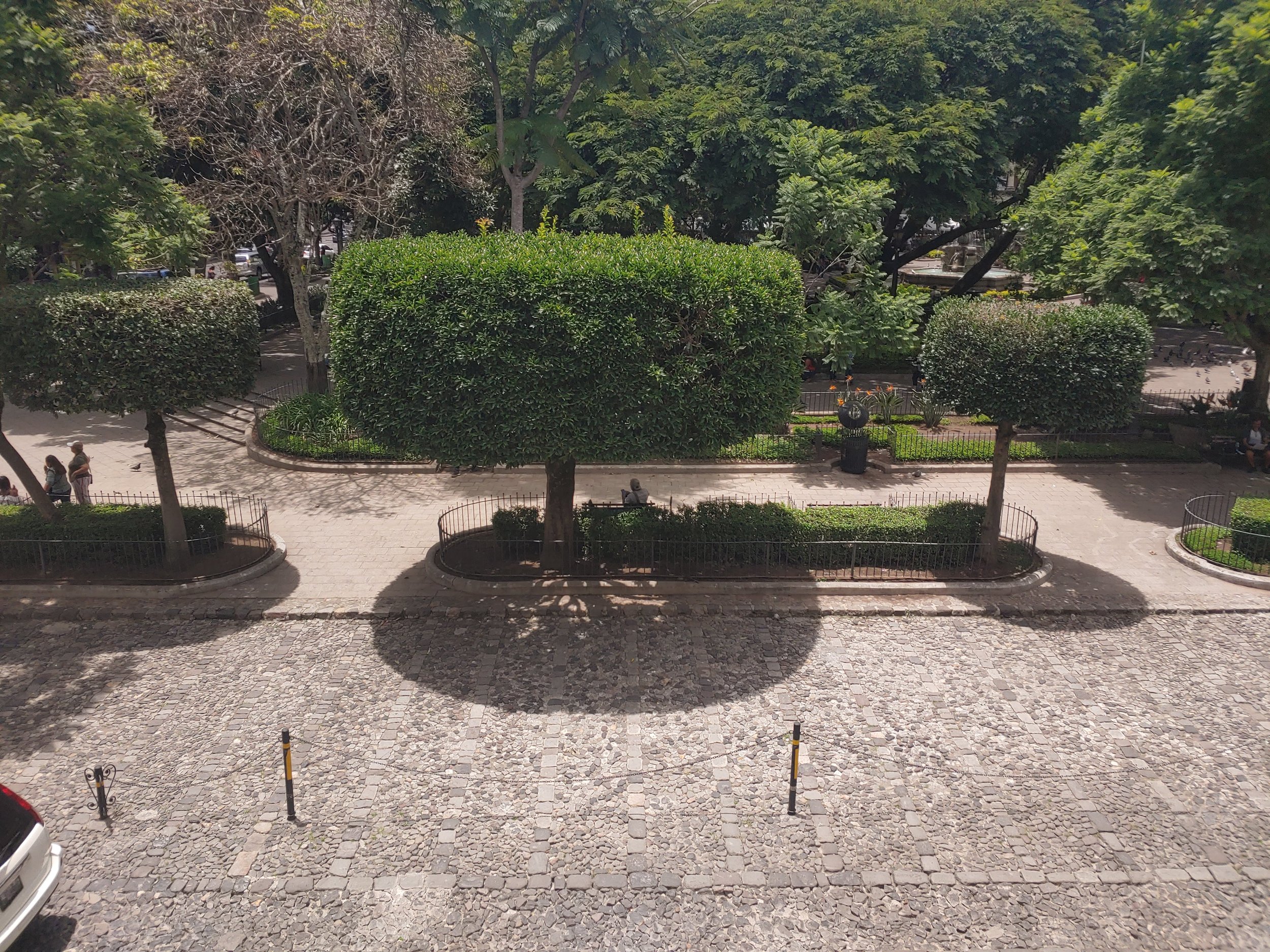

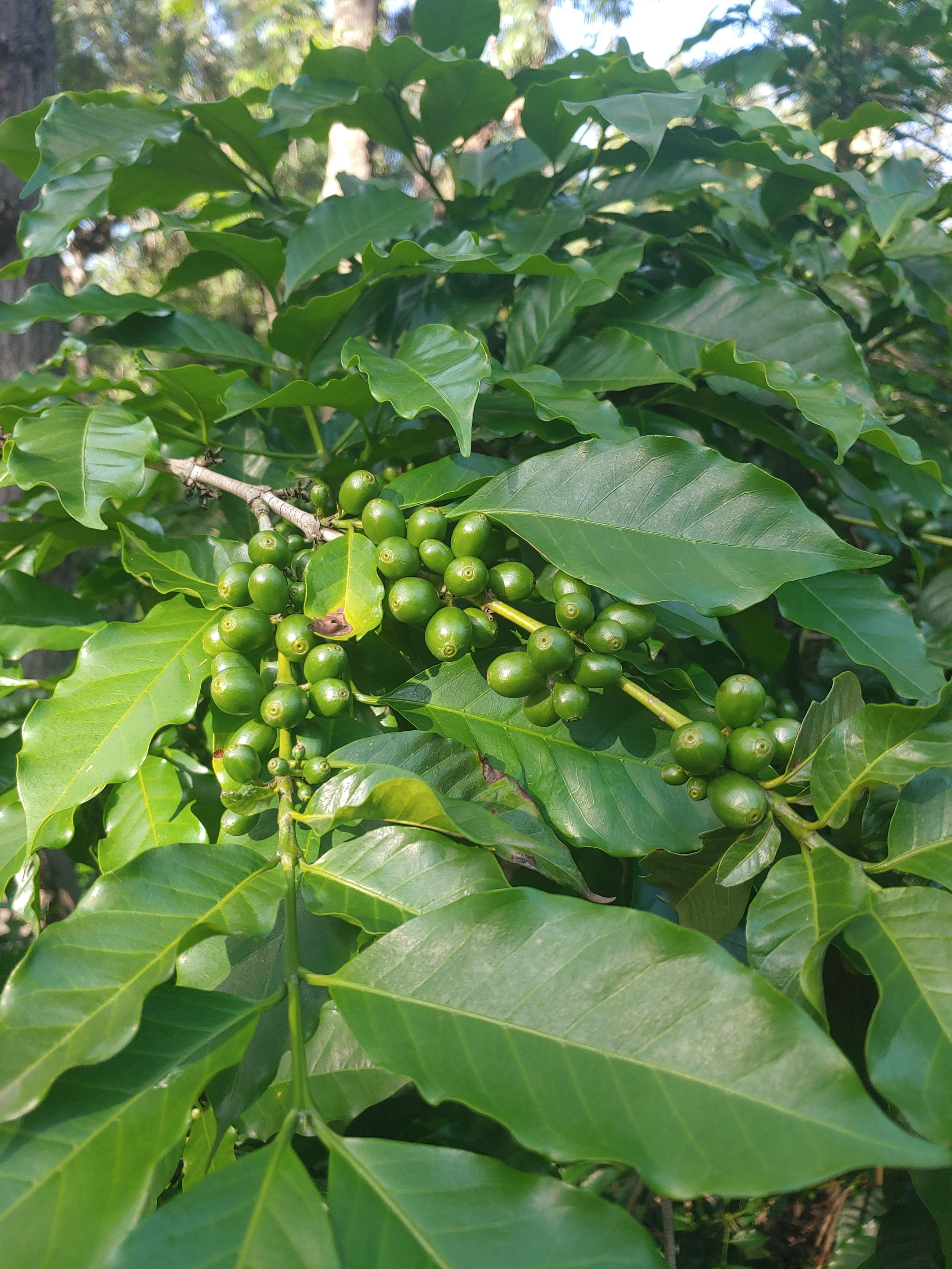
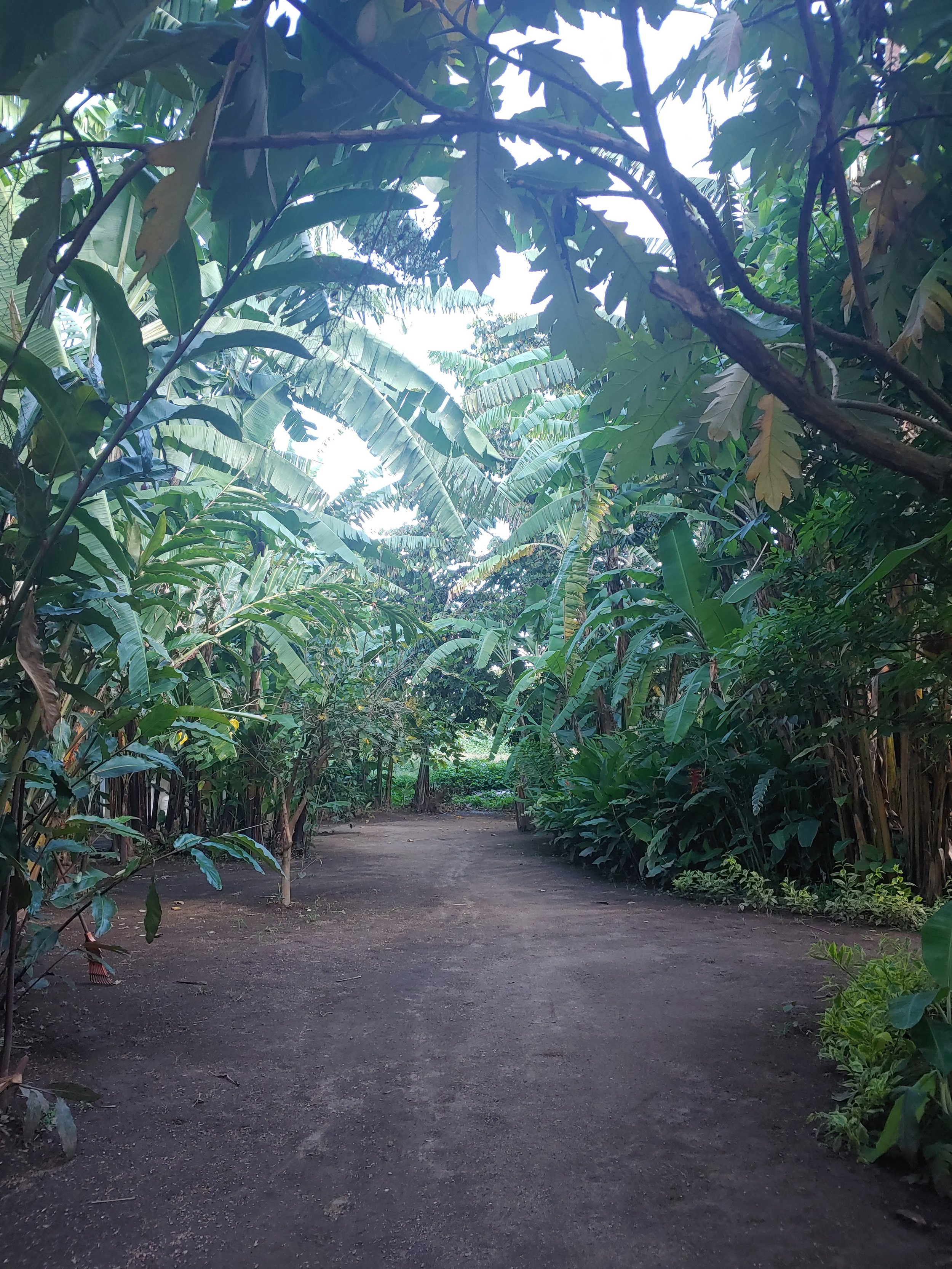
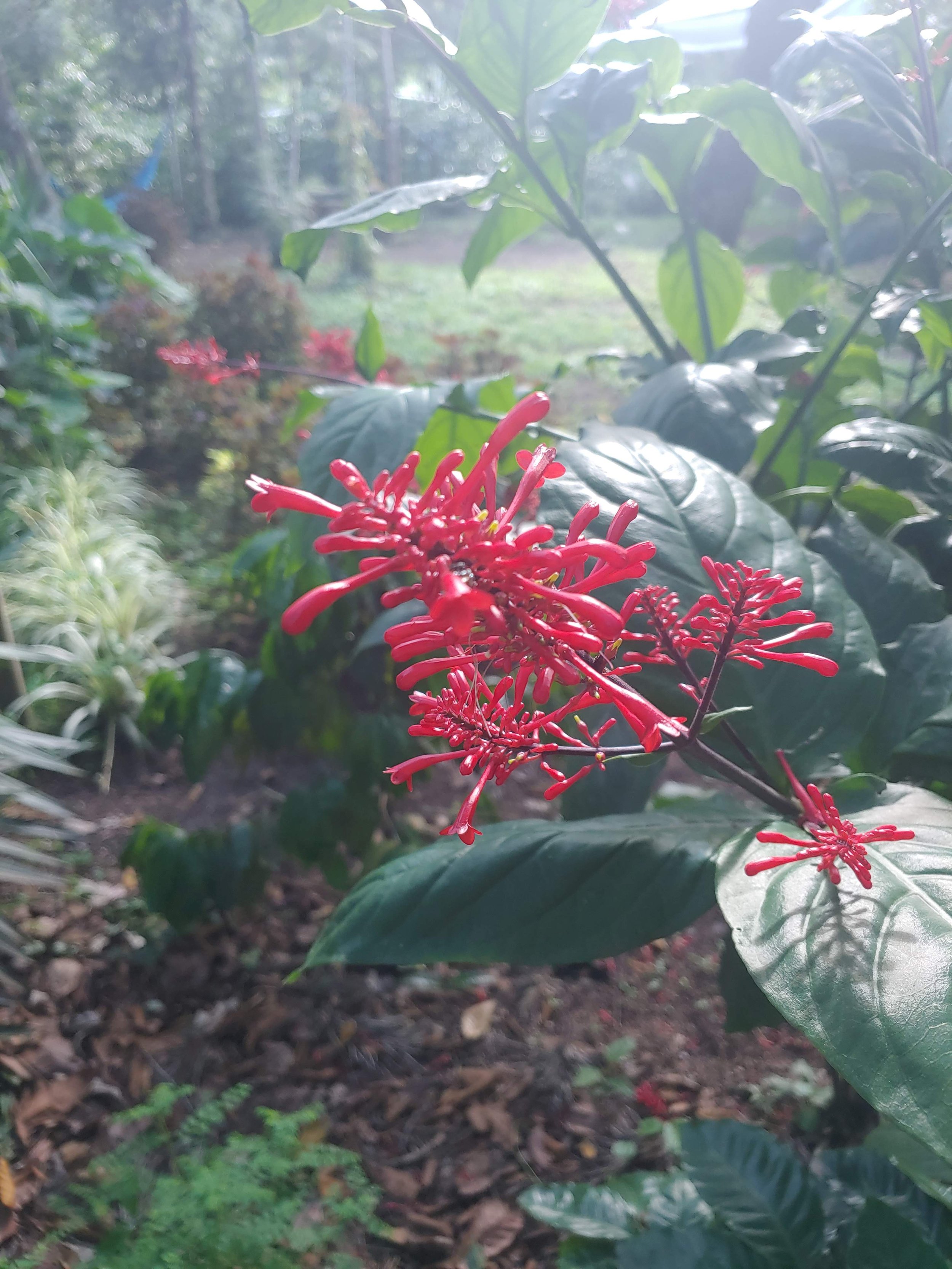
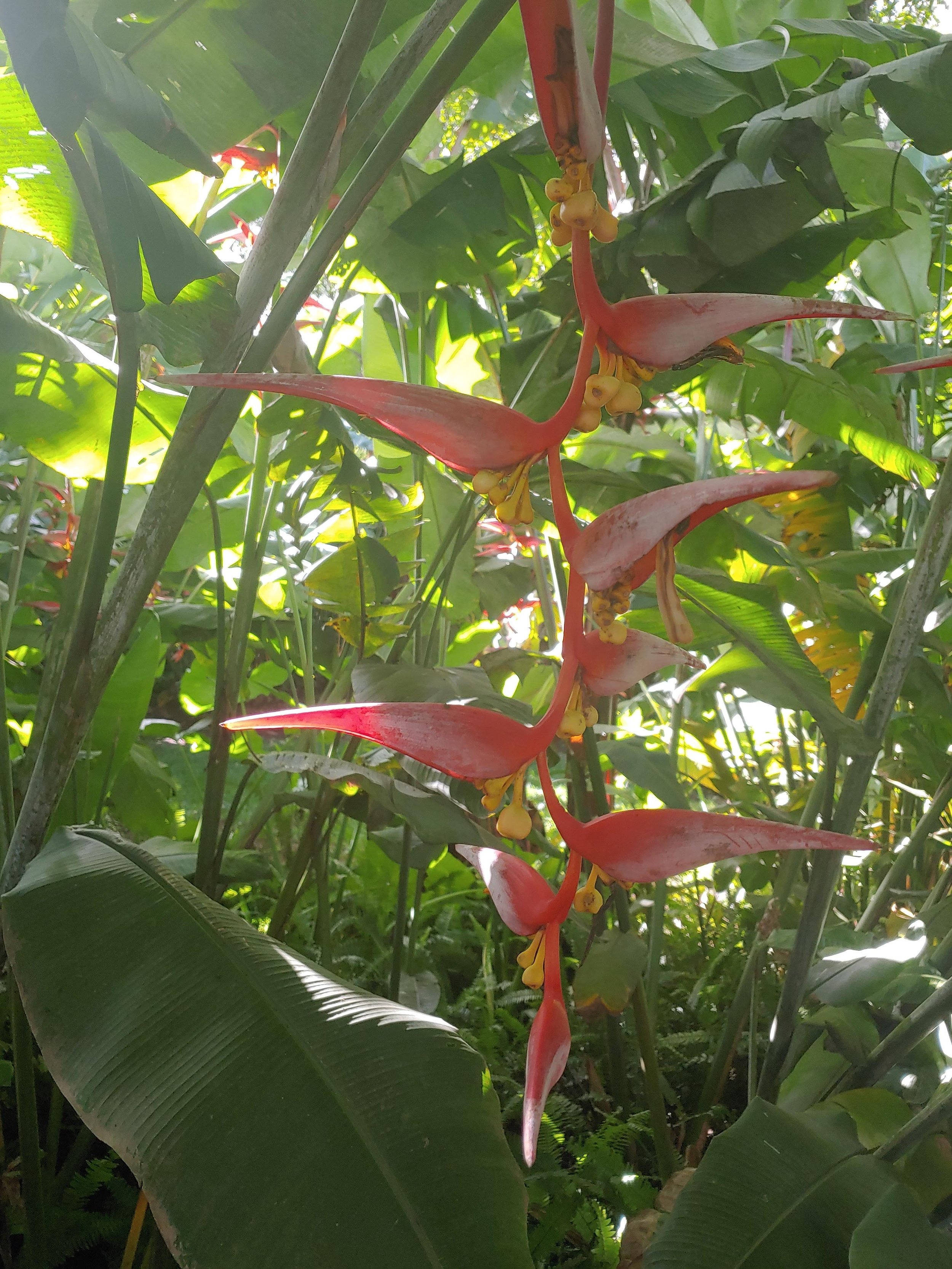
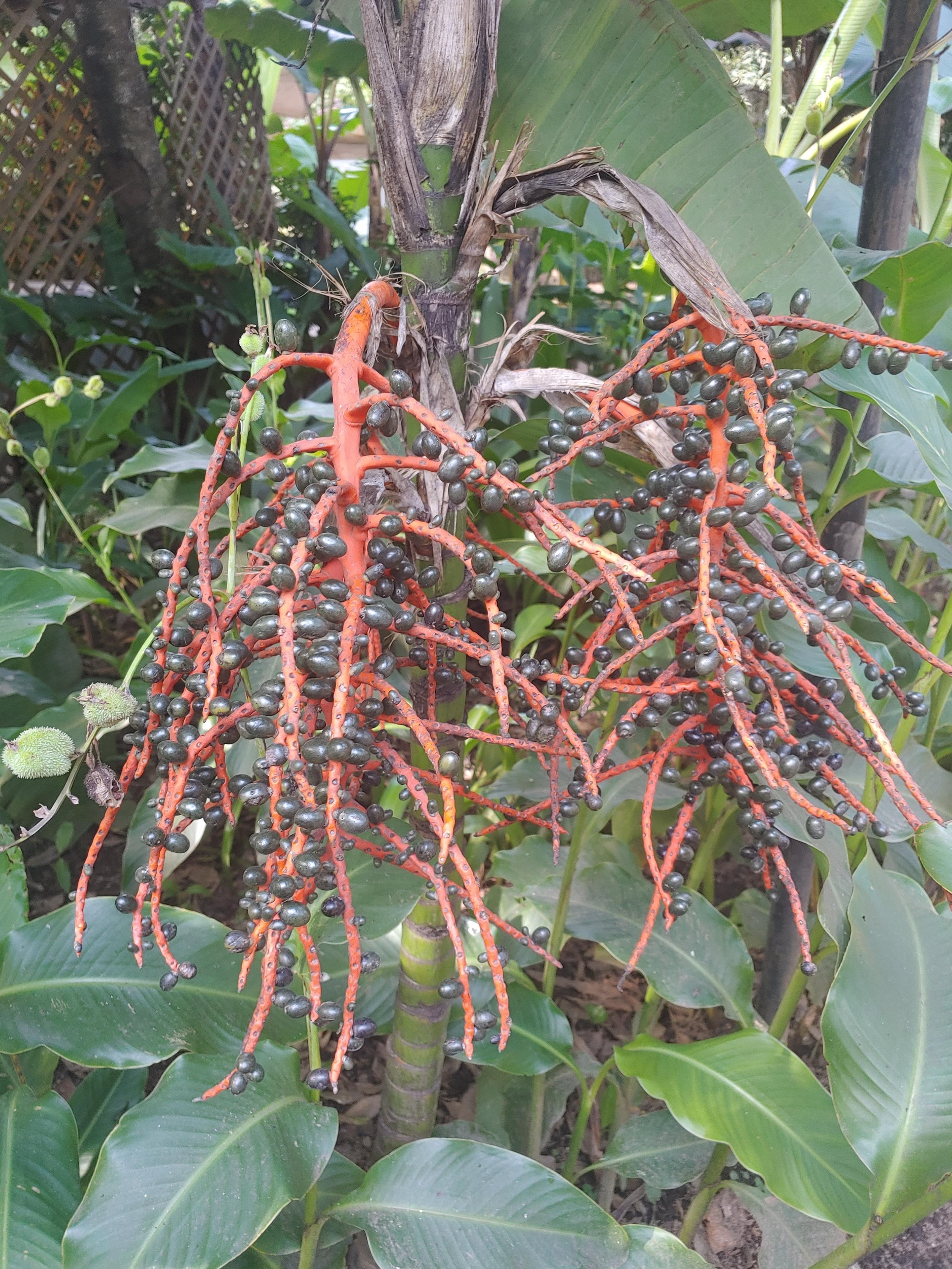
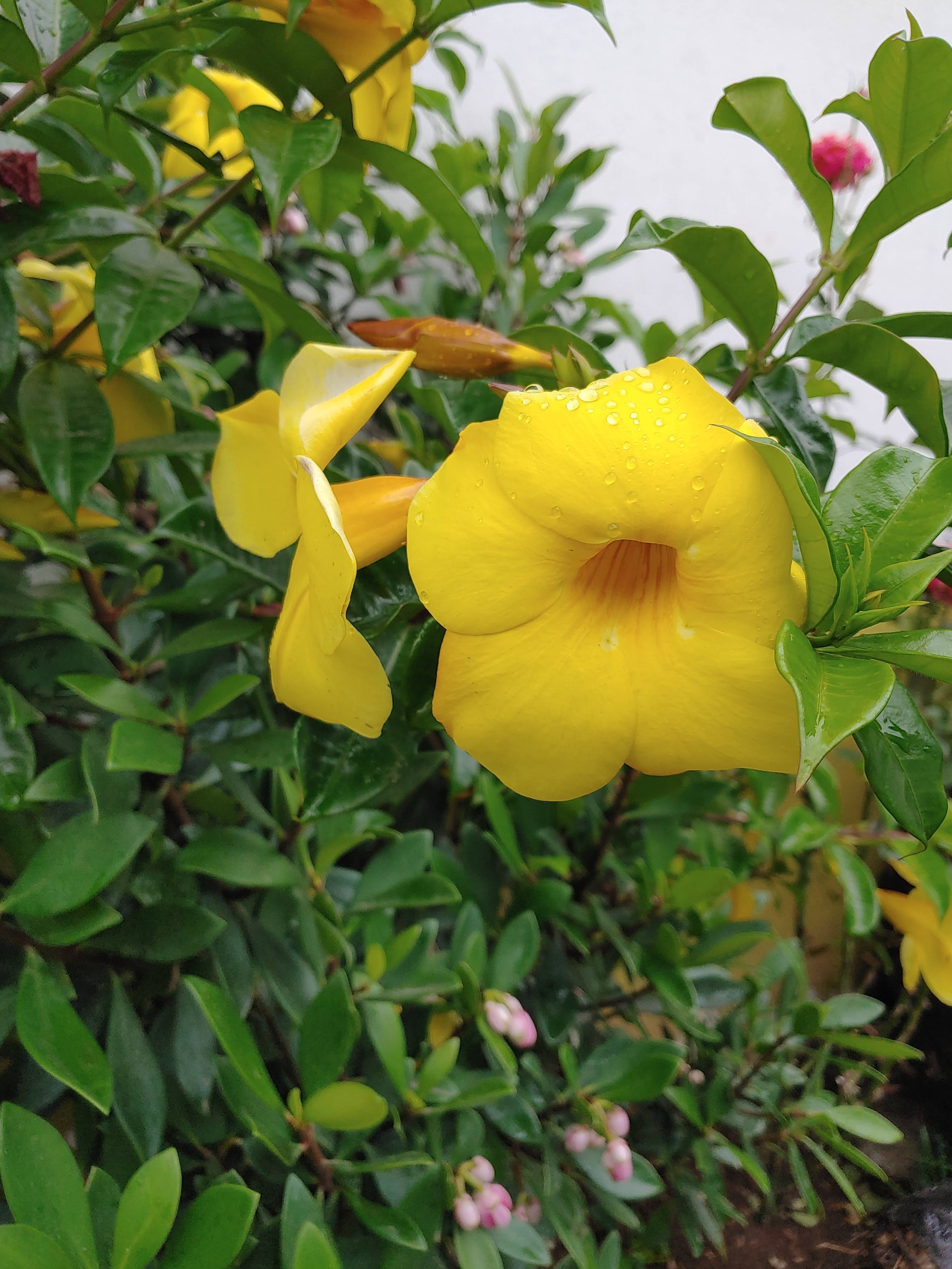
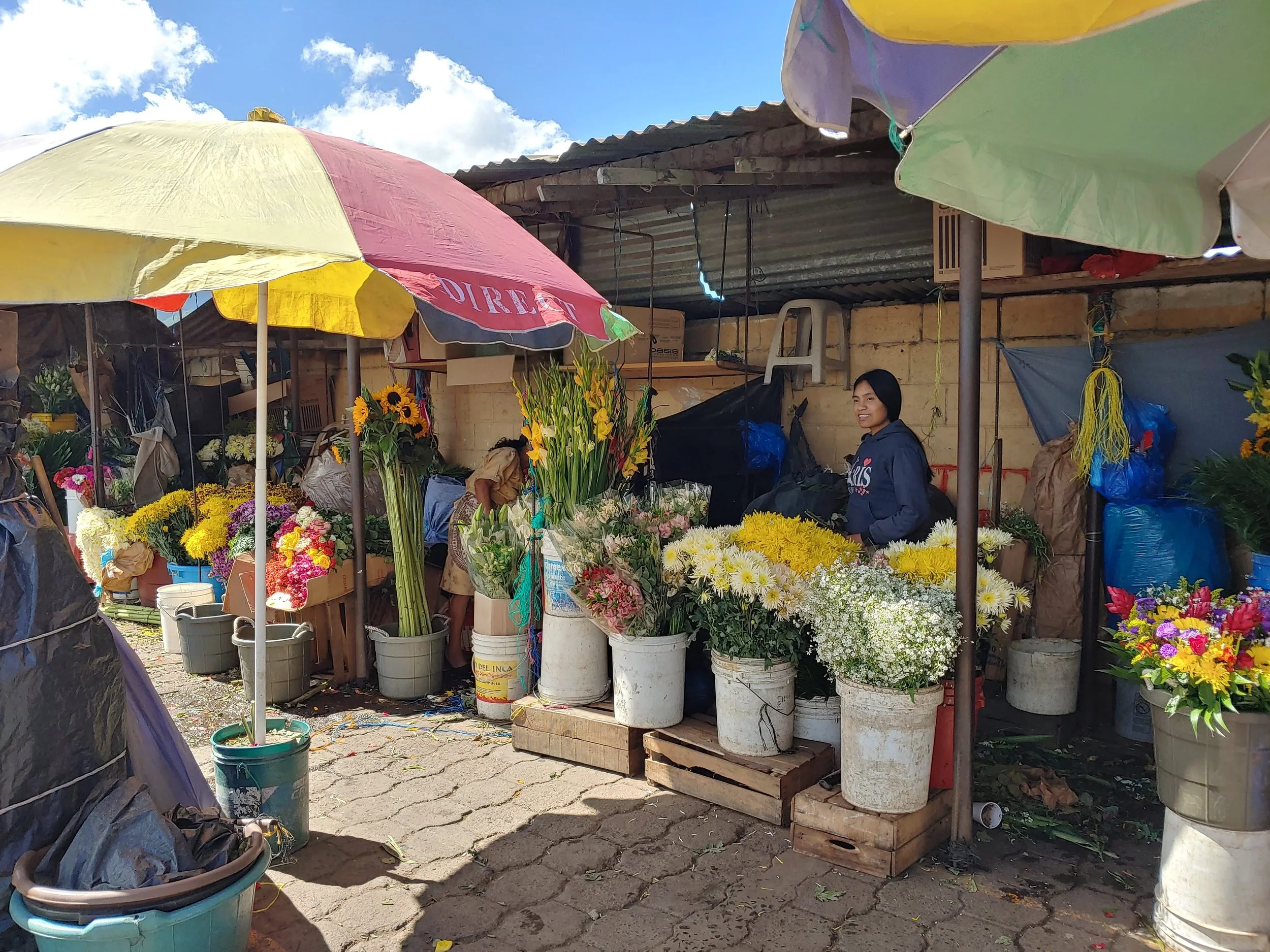

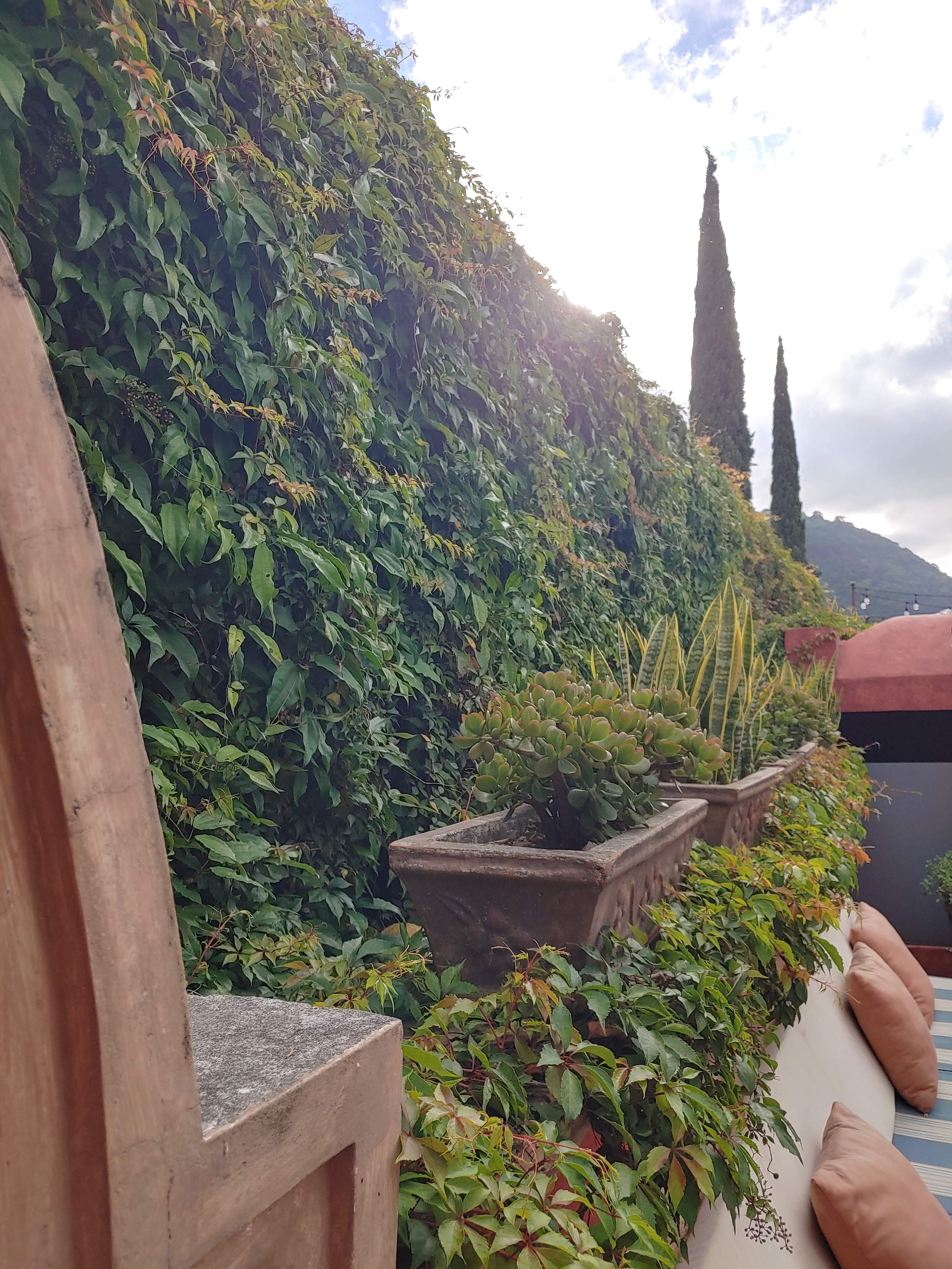
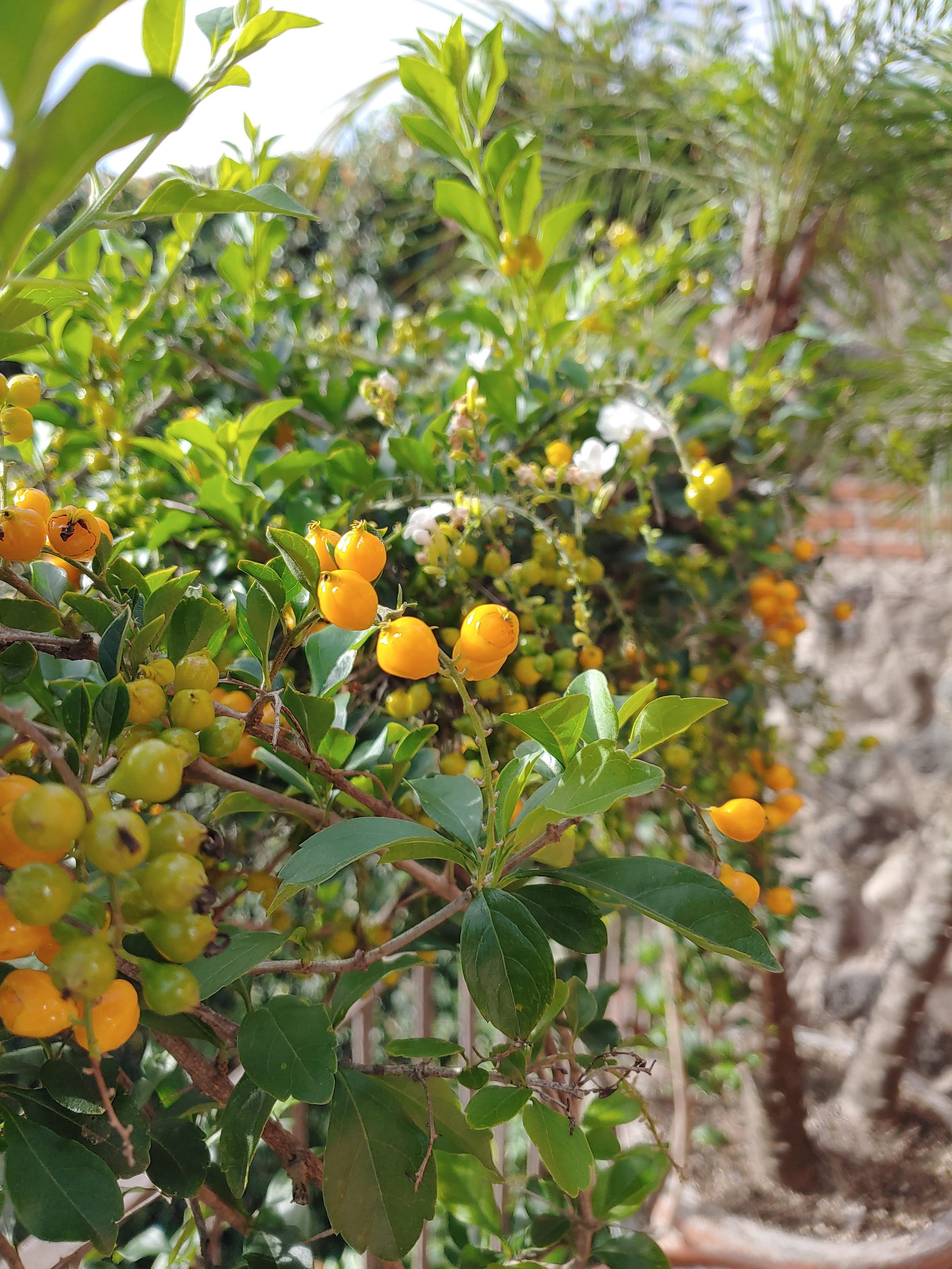



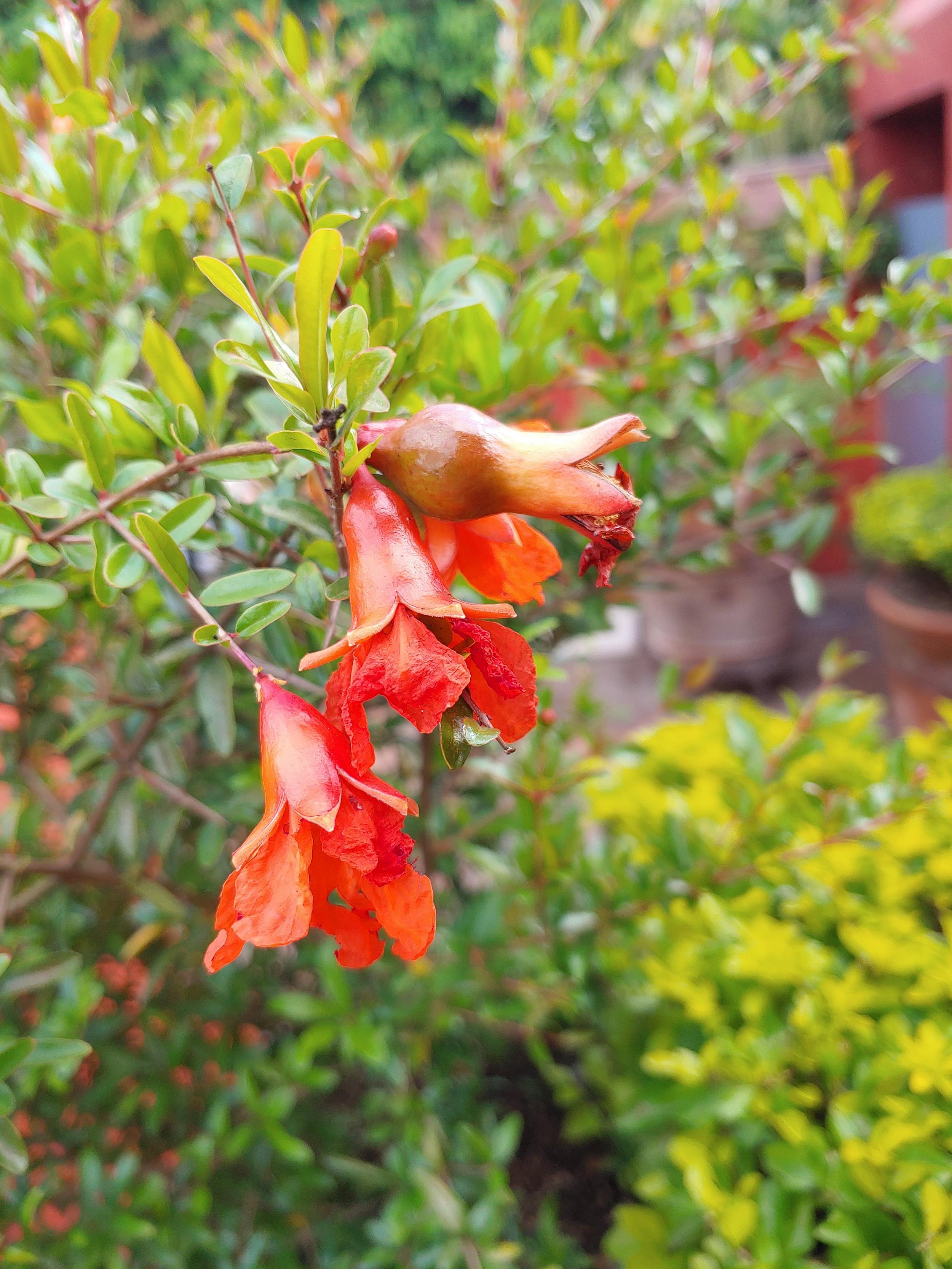
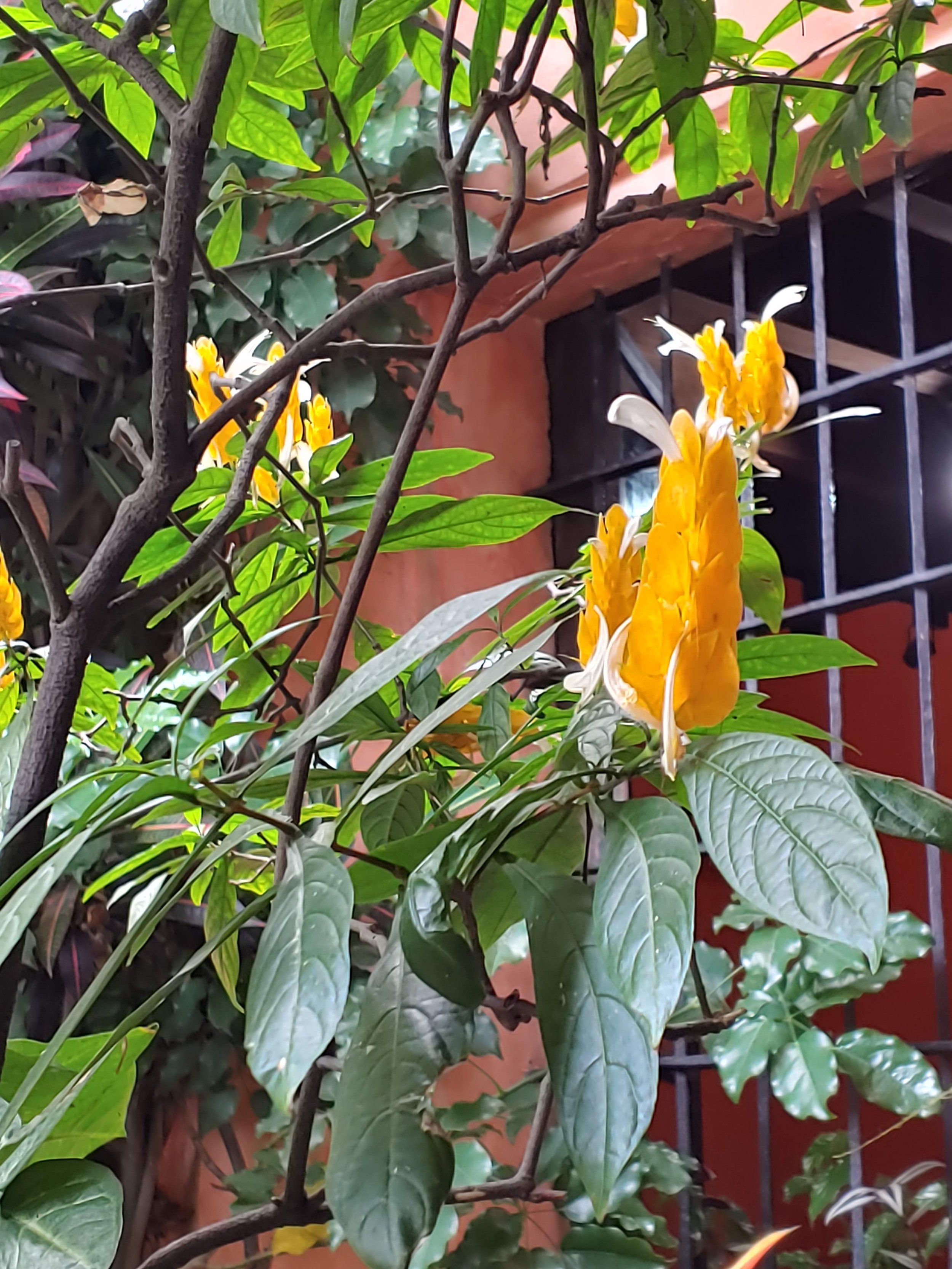
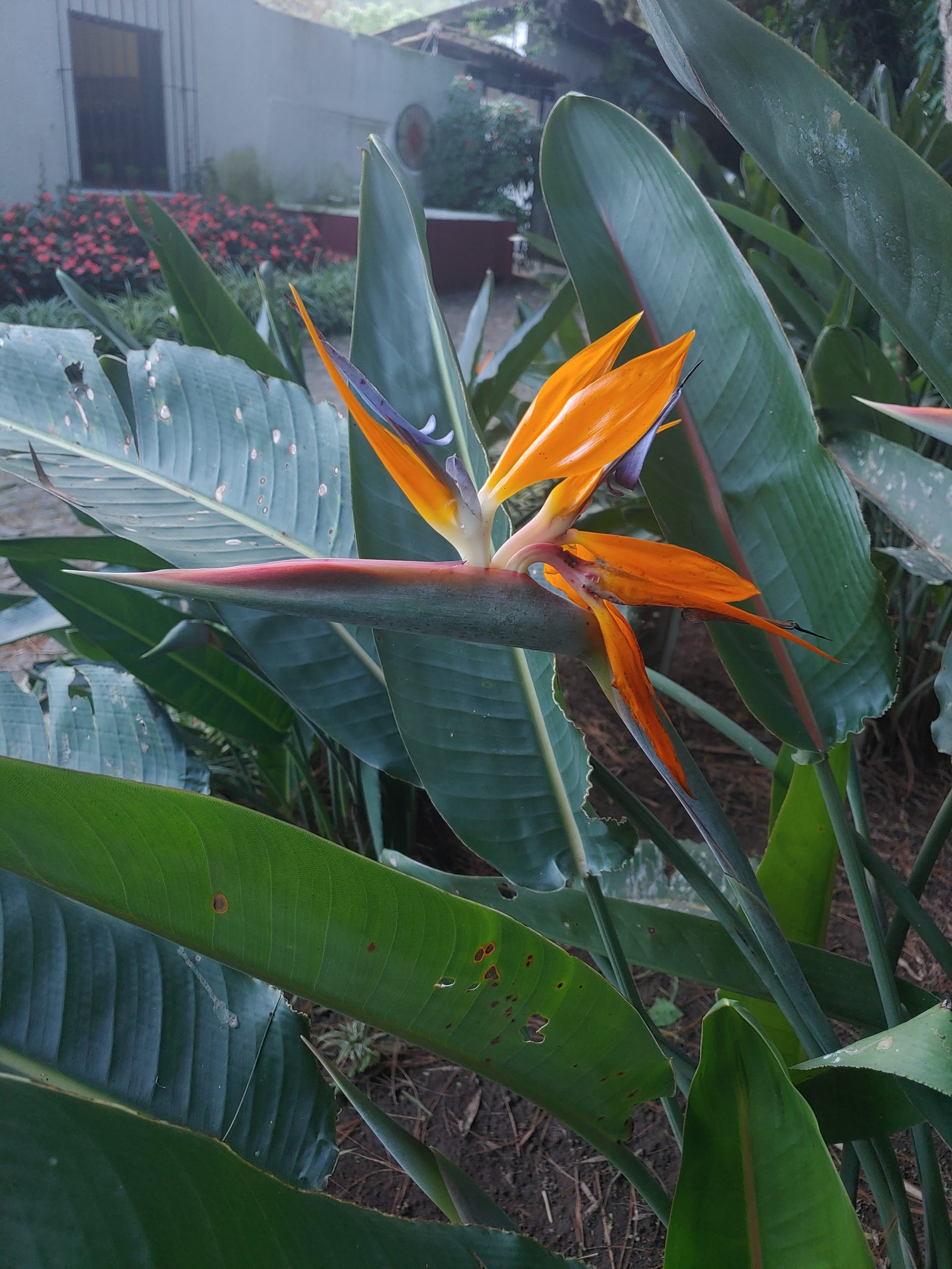
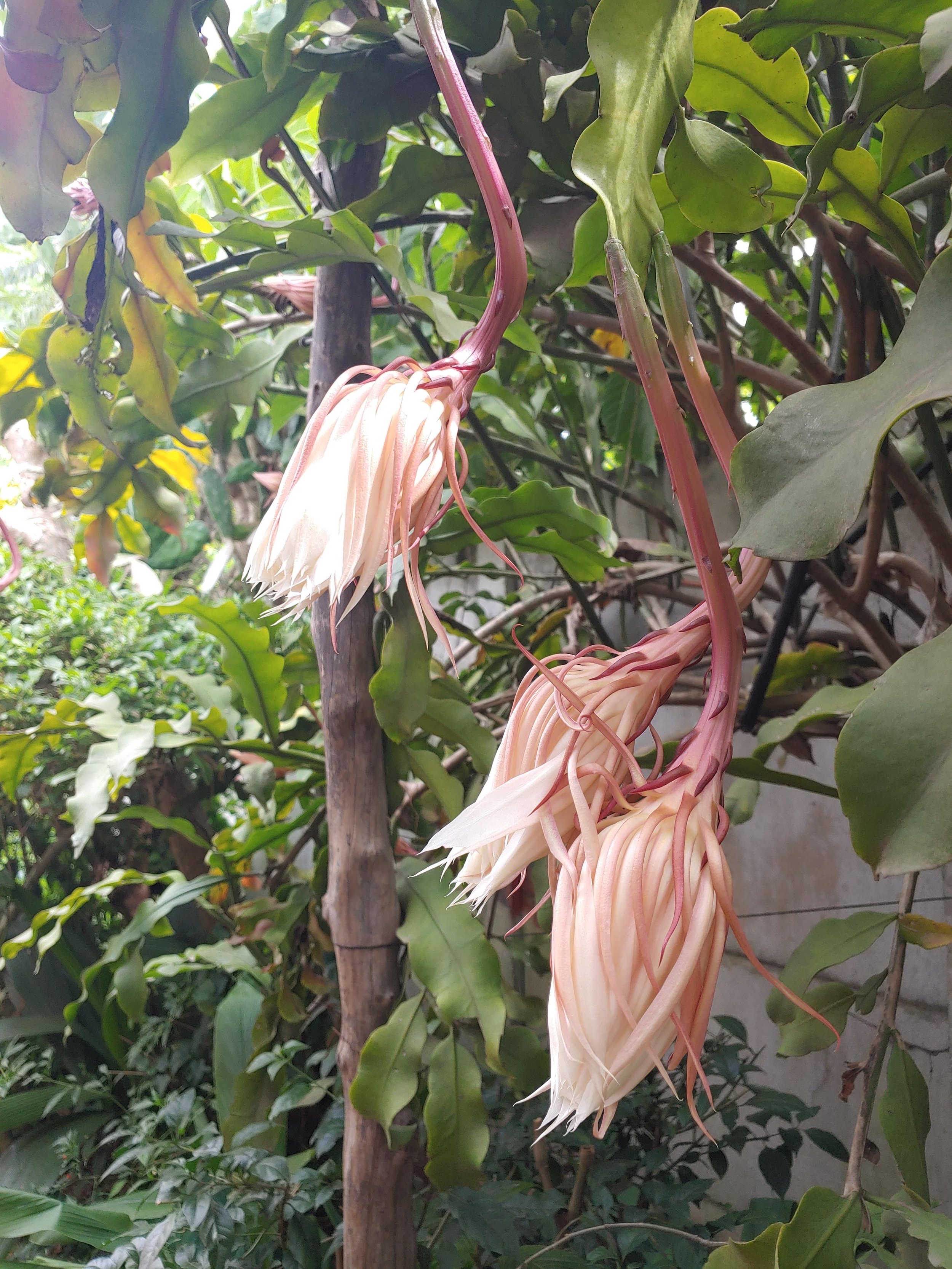
Late Summer Dahlia Care-- Keep Going!!
It’s August— So it’s hot and it’s either wet or dry depending on where you live. Most likely it’s not an ideal climate for your dahlias right now.
It’s been a mostly wet summer here. We had a hot dry patch in early July (complete opposite of last year’s cool wet beginning to July). It’s easy to want to give up right now. I’ve heard multiple times recently— I’m going to quit growing dahlias if they don’t start looking better soon!
Well I’ve got news for you— how they look and perform— that’s up to you (to a degree). Yes, the weather plays a substantial part. But as a dahlia grower, you have to observe and adapt to whatever the weather is throwing at you!
KA’s Mocha Katie (a new personal favorite)
For example, we’ve had thunderstorms that dump loads of water at least 3 times a week recently- sometimes we’ve even gone a stretch of several days in a row of afternoon rain storms. As I walked my field the other day, I began noticing lighter green leaves on the newer growth. This is a sure sign that the dahlias need feeding. Lots of rain means that nutrients are leaching out. One benefit to clay soil even in rain, it does hold more nutrients than a sandy soil. I spent a lot of time earlier this week feeding my dahlias. And with as much rain as we’ve already had this week, I’ll probably feed again before the week is out. I feel like they are behind nutrient wise and a double feed won’t hurt them this time. I wouldn’t normally feed 2x a week but I think they are really low in nutrients right now.
I’m feeding with Alaska Morbloom which is a 0-10-10. I also added some fish emulsion since we’ve had so much rain. I usually stay away from nitrogen this time of year but I could tell the plants needed it. Just keep the phosophorus and potassium numbers (the last 2 in the 3 number chain) higher than your nitrogren when your dahlias are beginning to produce buds and blooms.
I also applied a fungicide. Thankfully I haven’t seen any powdery mildew yet- although with the current weather conditions, that’s not surprising. Powdery mildew can come on fast as it gets later in the season; it’s definitely time to begin frequent scouting for it. With as much rain as we’ve had, I do know we are likely to get other fungal related diseases so a fungicide regimen this time of year is crucial. I sprayed Cease the other day. But I also alternate with Copper and Milstop too. I’ll move more towards the Copper and Milstop rotation as we get later into the season. Those actively kill fungal spores. The Cease is more of a preventative measure and it’s quickly getting past the prevention stage in the field.
Linda’s Baby Dahlia from the side
I’ve also seen some plants just melt down and rot. But with the amount of rain we’ve had, I’m not surprised. Disappointed yes, but not surprised. It’s only a few plants here and there and with heavy rain and heavy clay soil, it’s to be expected. The loss rate is still nothing like the loss rate of last year during the dry heat wave of a summer we had.
BJ”s Dusty Rose
Dahlias in a hot humid climate definitely aren’t for the faint of heart. They aren’t a plant it and forget it plant. But the good news is— there are lots of ways to adapt and I find I really enjoy a crop like dahlias because after 10+ years of growing them, I still learn tons of new tricks every year!
If you are a new grower, hang in there. The pay off is coming. The weather will begin to cool in a few weeks and the dahlias will begin their big show!
Dahlia Crop Protection: Surround WP
If you follow lots of flower farmers on Instagram, you’ve probably seen it— the chalky white liquid being sprayed all over their plants.
So what is this stuff? It’s call Surround WP. It’s a crop protection spray. It’s made of Kaolin clay which is milled very finely into a powder that’s water soluble. It’s also OMRI listed (this means it’s certified organic).
I use a battery operated backpack sprayer to apply it. Hand held works well too. I have a My 4 sons sprayer- mine has held up well since 2019 and it’s still working great. I love that it holds a charge for forever! Battery operated is worth it if you are spraying more than 2-3 rows.
The mix rate is about 2-3 cups of powder to 1 gallon of water. I mix it to the heavier 3 cup side for my first application of the season. After you have a bit of a base on the plant, you can mix a bit lighter when you reapply. It will stay on through some rain but will eventually need to be re-applied. I do mine around every 2 weeks but that can vary depending on how much rain we have- sometimes it’s more often, sometimes not.
A light first application- I’ve learned to begin at a heavier rate and then spray lighter in subsequent applications.
It looks like you are spraying milk and at first, you will wonder if it’s doing anything. But it has to dry on the plant- that’s when it begins to show some coverage. Nice thing about the Surround is that you can spray it pretty much any time of day as long as it’s not windy. It’s not going to burn like a fertilizer or horticultural oil. You can also mix other things into the spray- such as fish emulsion. I would recommend spraying early morning or evening if you are going to mix other liquids/oils.
I spray it during the first 2 months of a dahlia’s growth cycle. After that, bud development begins and that’s when you want to stop. It never completely washes off - even with a lot of rain. I can always see a little bit of it on the lower leaves up until frost. But you don’t want it on your blooming stems so I stop when I see bud formation.
A heavier application
You can also see the other reason to reapply— the new growth will need covering. It’s easy to measure how fast your dahlias are growing in between sprays.
So what is this spray doing for my dahlias? Several things:
Sun protection - As my friend Daniel at Petal Pickers Flower Farm says— it’s like sunscreen for plants! That’s a pretty accurate description. It’s the plant version of the white sunscreen you see on people’s noses! It reflects light away from the plants and generally keeps them cooler (up to 10-15 degrees cooler). When I grew dahlias in landscape fabric, I would spray the fabric as well as the plants for maximum reflective qualities. I spray for sun protection when I see temps in the high 80’s and higher. I grow in straw mulch now but still use landscape fabric in my pathways so I spray the pathways when it gets really hot.
Powdery mildew protection- PM spores get on your plant leaves and start turning into white powdery disease evilness. Surround prevents the spores from getting to your leaves. It’s a great form of early season PM prevention.
Pest Prevention- It’s not going to keep everything from eating your plants, but it will lower the pest load. It can help deter small animals (deer too) from eating your plants. It has a nasty taste to them. It’s not a fool proof solution but it’ll help. For a more complete list of pests deterred, click here.
One last quick tip— Before your first spray, inspect your field very carefully for any signs of virus. It can be harder to detect under the spray. Also inspect before each spray- check the new growth because that’s where it’s going to be easiest to see virus developing once you have the spray applied. The spray is useful at helping to keep virus loads in your fields down because it’s helping to control pests that spread viruses. Also you can still check for virus even after spraying if you do it very early in the morning. I get a heavy dew most mornings and when the plants are wet, the spray is not chalky so I can easily inspect for virus during this time.
Surround WP has become an important part of our growing plan for dahlias. We always get hot at some point, we have loads of pests and powdery mildew always raises it’s ugly head— So to be able to handle all that with one solution— well what’s not to like!




